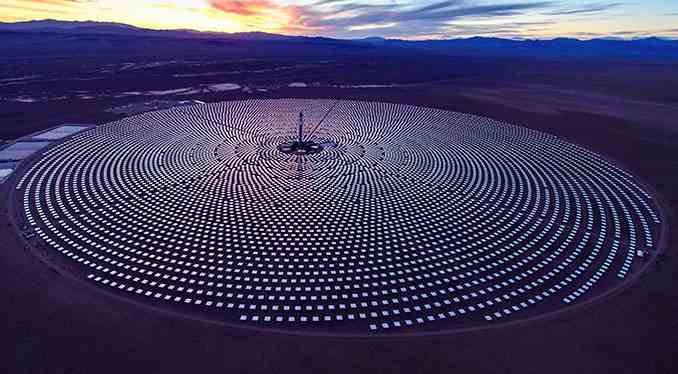Despite both the Coalition and Labor parties coming to the election with statements of support for solar thermal and storage technologies, particularly solar towers, it seems that Australia remains in danger of missing out on being a front-runner in the technology.
The latest mid-term renewable energy outlook document from the International Energy Agency says China, Chile, Morocco and South Africa are likely to take a lead in solar thermal developments in the next five years. There is no mention of Australia.

The IEA says there are currently about 4.6GW of large-scale solar thermal projects in the world, around half of them in Spain, which led early development. Over the next five years, it sees an additional 6.4GW of solar thermal – nearly all of it with storage – although this figure could nearly double in its “accelerated” deployment scenario.
The leading companies are SolarReserve, ACWA Power, Brightsource Energy and Abengoa Solar, although the latter is still fighting its way out of bankruptcy, causing most of its projects to be delayed.
Two of the companies are, or have been, active in Australia. SolarReserve has outlined plans for one, and possibly as many six, large-scale solar tower and storage projects, while Abengoa has had to withdraw from a planned pilot facility in Western Australia because of its financial difficulties.
The solar thermal market was set to take off a few years ago, but got shunted aside by the stunning falls in the cost of solar PV. Now, as the penetration of variable renewable energy sources such as wind and solar PV increases, attention is again turning to storage, and to solar thermal plants.
“Despite being a small market, CSP remains a proven renewable technology that provides flexibility benefits to power grids, especially when integrated with thermal storage,” the IEA says in its report.
“The technology’s output can then follow closely the electricity demand profile during the day in regions with high direct normal irradiance (“clear skies”) and provide firm peak, intermediate or base-load capacity.”
Several proposals have been put forward for South Australia, which has among the highest rates of variable wind and solar in the world (more than 40 per cent), although the state government appears intent on issuing contracts to gas-fired generators rather than turning to new technologies.
The IEA says advanced molten storage, once considered a novelty, is now a “standard concept.” It cites SolarReserve’s 110MW solar tower and molten salt storage facility in Nevada, and its planned 260 MW plant (with 14 hours of storage) utilising similar technology in Chile.
“In emerging markets, storage remains critical, driven by the need to meet evening peak demand in countries such as South Africa, where regulators approved at least a half- dozen CSP plants with storage.
“In northern Chile, reliable electricity from CSP can be combined with large-scale PV to deliver base-load power, a requirement for the country’s large mining industry.”
It says costs are also falling rapidly, and will further reduce as the finance market becomes more familiar with the technology, although costs vary considerably depending on location, the size of the solar field and storage component, and local labour and financing costs.
Furthermore, the perception remains that CSP, and its more complex designs, is regarded as an emerging technology, adding the higher financing cost of a demonstration as a factor in LCOE analysis. It is expected that greater standardisation of plant design and equipment as markets mature will drive investment costs down over the medium term.
The 150 MW NOOR III solar tower, with eight hours of storage, will cost around $US150/MWh), while in South Africa, a base price of $US120/MWh was made for the 100MW Redstone CSP tower project with 12 hours of storage to be built by ACWA and SolarReserve.
China, which aims to have 10GW of solar thermal with storage, has canvassed an initial feed-in tariff of $US180/MWh to get project underway.
South Africa, which entered the CSP market in 2015 with the 100MW KaXu Solar One plant with three hours of storage, is expected to install an additional 600MW of CSP, all with storage thanks to the country’s excellent solar resources and supportive government policy.
Morocco’s CSP capacity is expected to expand by 660MW over the medium term and China is expected to install 3.1GW of its 10GW target in the medium term, and most of the projects over 100MW including several hours of storage.
Chile’s CSP capacity is expected to reach 615MW by 2021, driven heavily by the advantage that storage provides to base-load energy supplies for the mining operations in the north of the country. It says storage will be an attractive component driving CSP in Chile as planned projects average over 12 hours.
SolarReserve’s 260 MW Copiapo plant with 14 hours of storage (expected to be commissioned in 2019) will combine CSP and solar PV to provide round-the-clock power for the mining industry.










